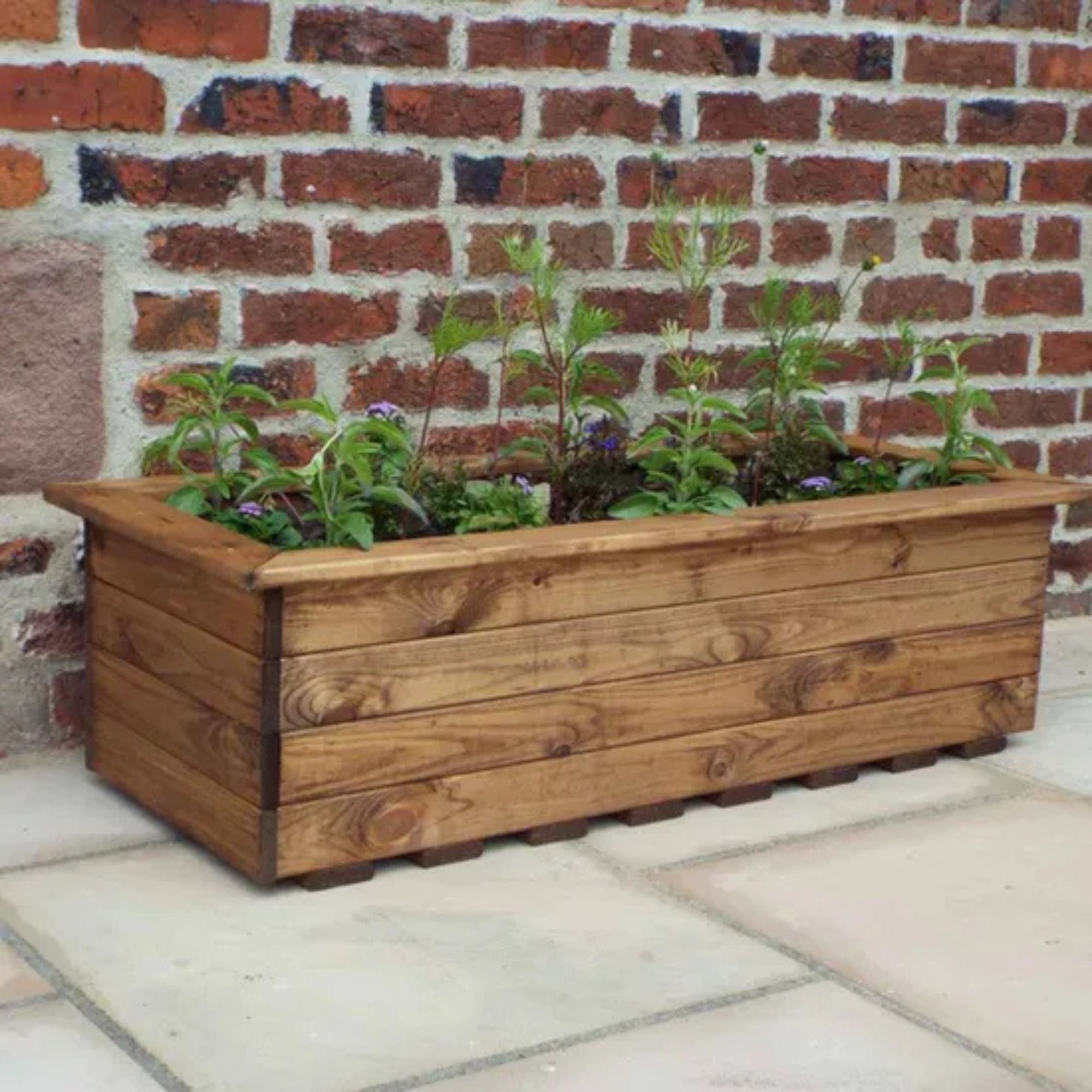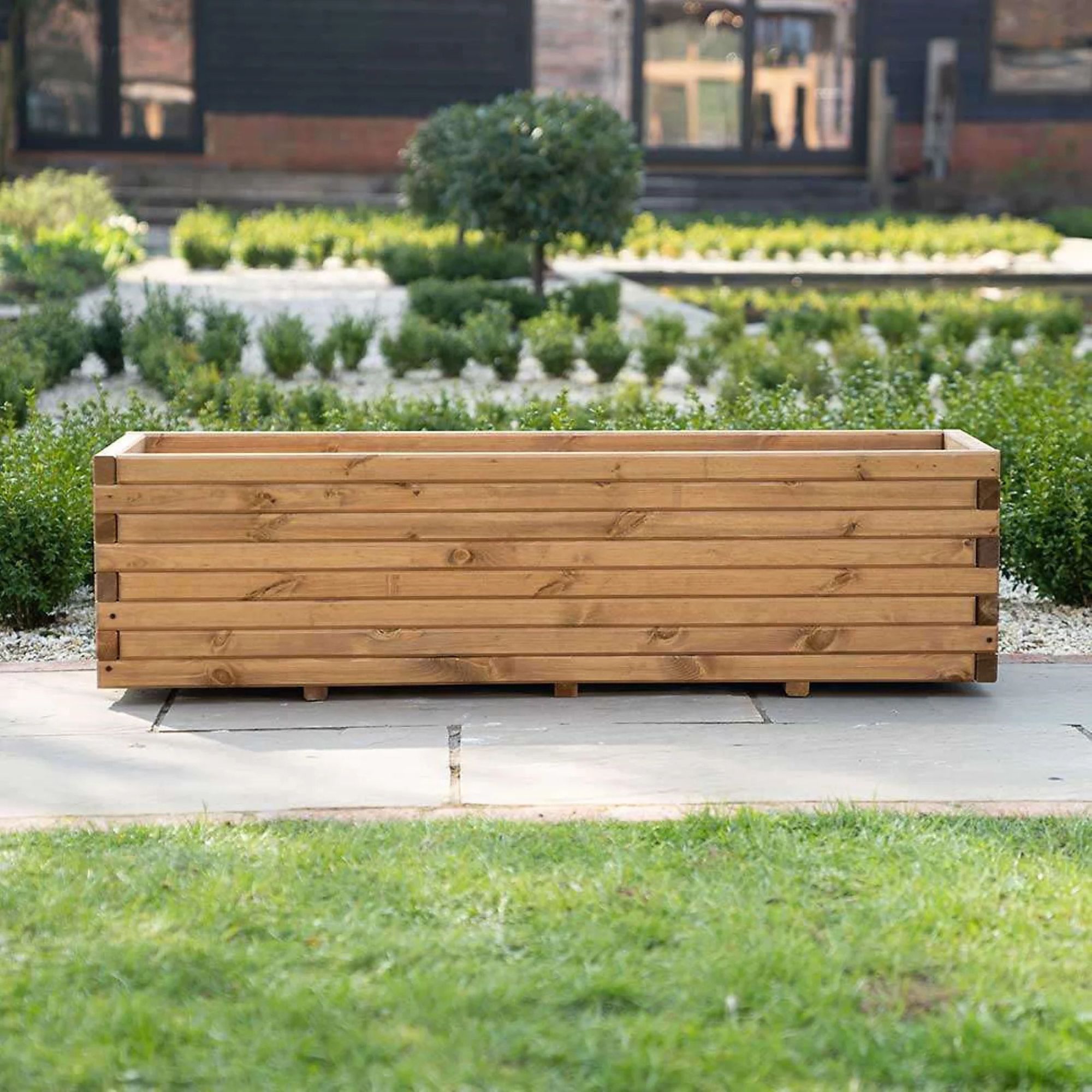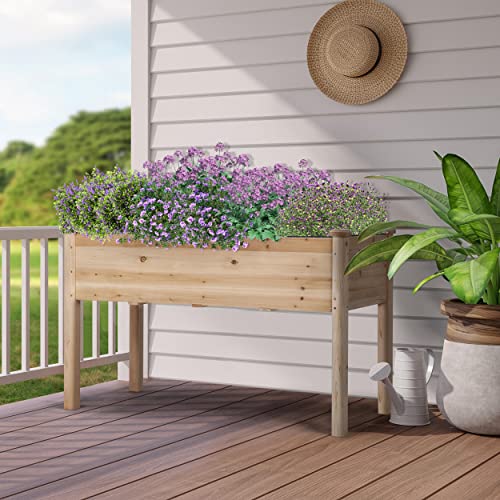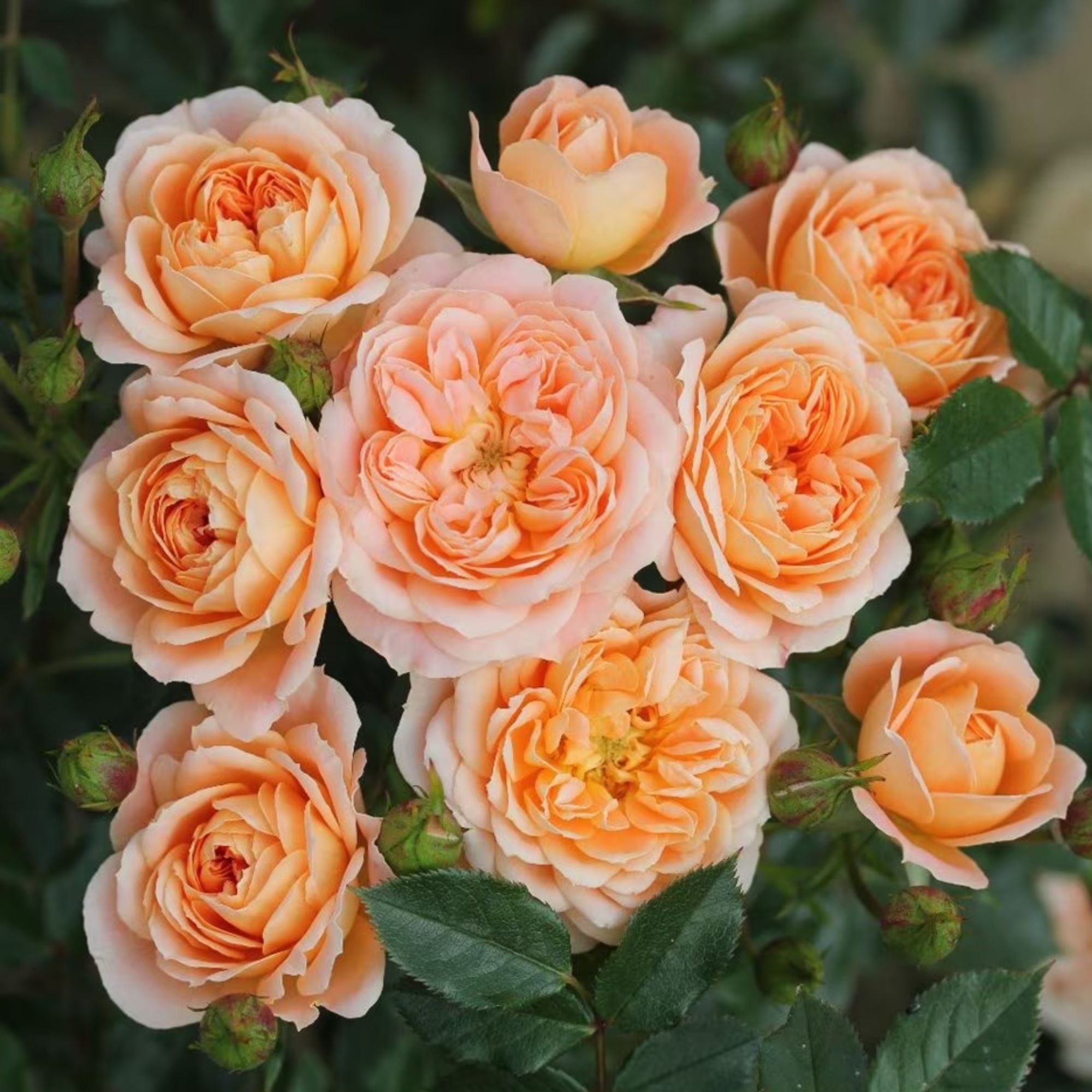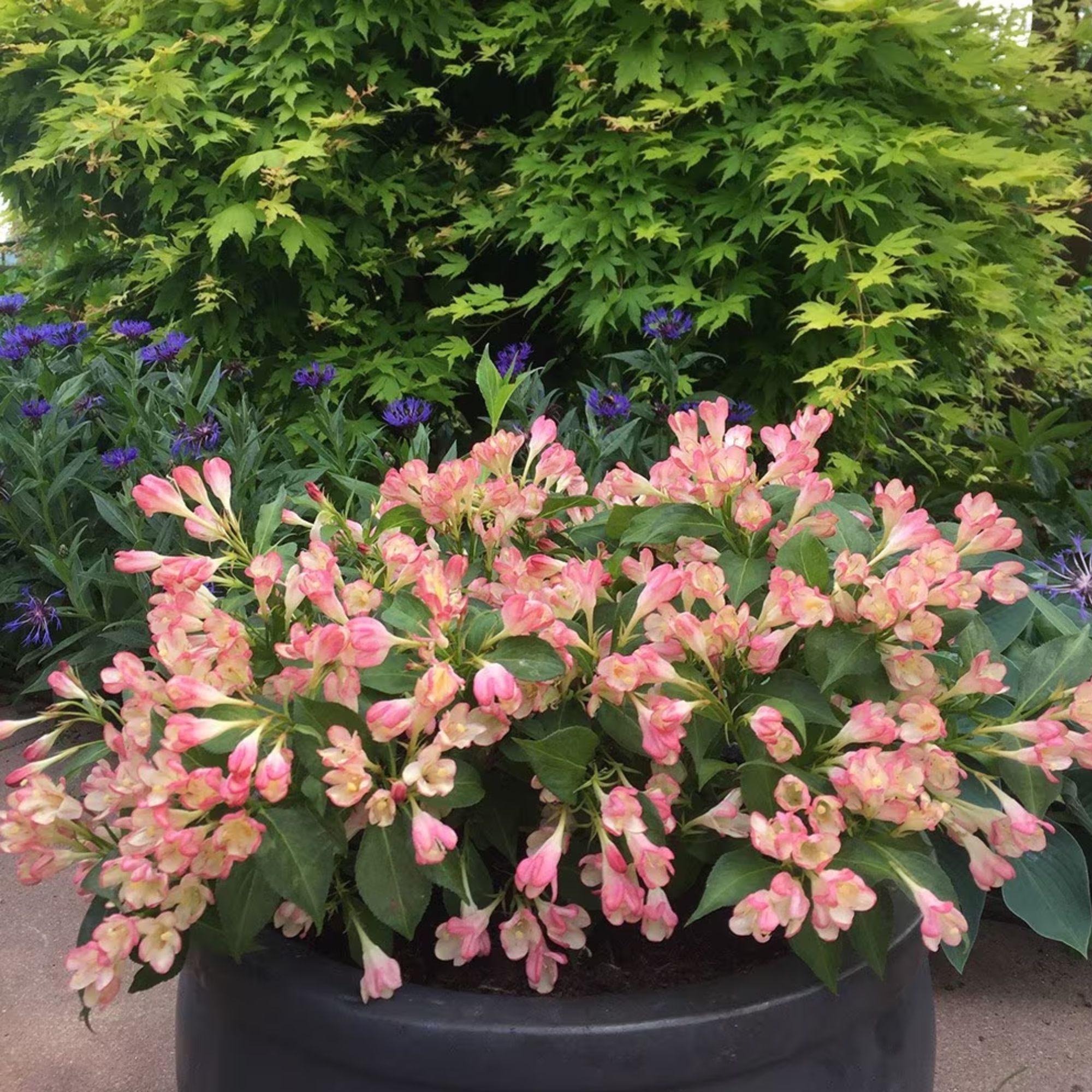Flower bed ideas – 10 ways to create your best displays yet
Design tips, plant recommendations and more
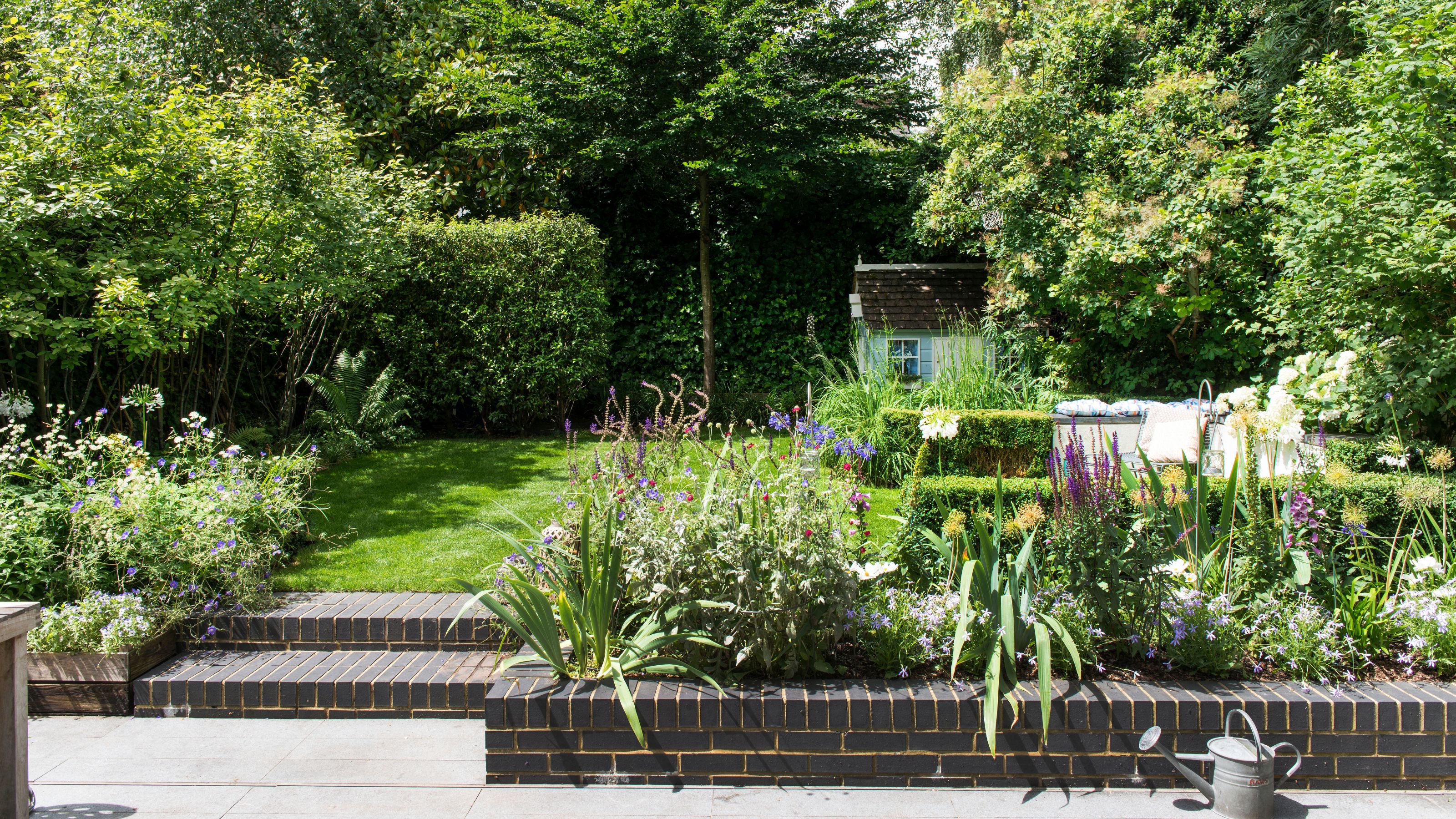

Sophie King
We've almost hit summer, and there couldn't be a better time to brainstorm some showstopping flower bed ideas.
Designing a flower bed should always be fun, and whether you're working with small garden ideas or fully-fledged garden border ideas, there's plenty of room for creativity. You might stick to traditional bedding plants for a classic flower bed aesthetic, or go for a wilder, informal approach.
To get a feel for the best flower bed ideas out there, we've spoken to garden designers and plant experts. You'll find our favourites in the list below.
1. Plant for pollinators

One of the main benefits of flower bed ideas in the garden (besides them looking beautiful) is that they can attract pollinators to your space. To provide a steady supply of nectar throughout the year, it’s a good idea to choose plants that bees love, which also bloom in succession.
‘Including winter- or early spring-flowering plants such as snowdrops, hellebores, crocus, narcissus and lungwort in your borders is attractive and will also maximise their value to pollinators in spring,’ explains the National Trust’s Senior National Consultant for Plant Health and Sustainability, Rebecca Bevan, in her new book, The National Trust Book of Nature Friendly Gardening.
‘Equally, late-flowering plants such as persicarias, asters and sedums are great to extend the season after the big summer show.'
2. Tier with a traditional planting scheme
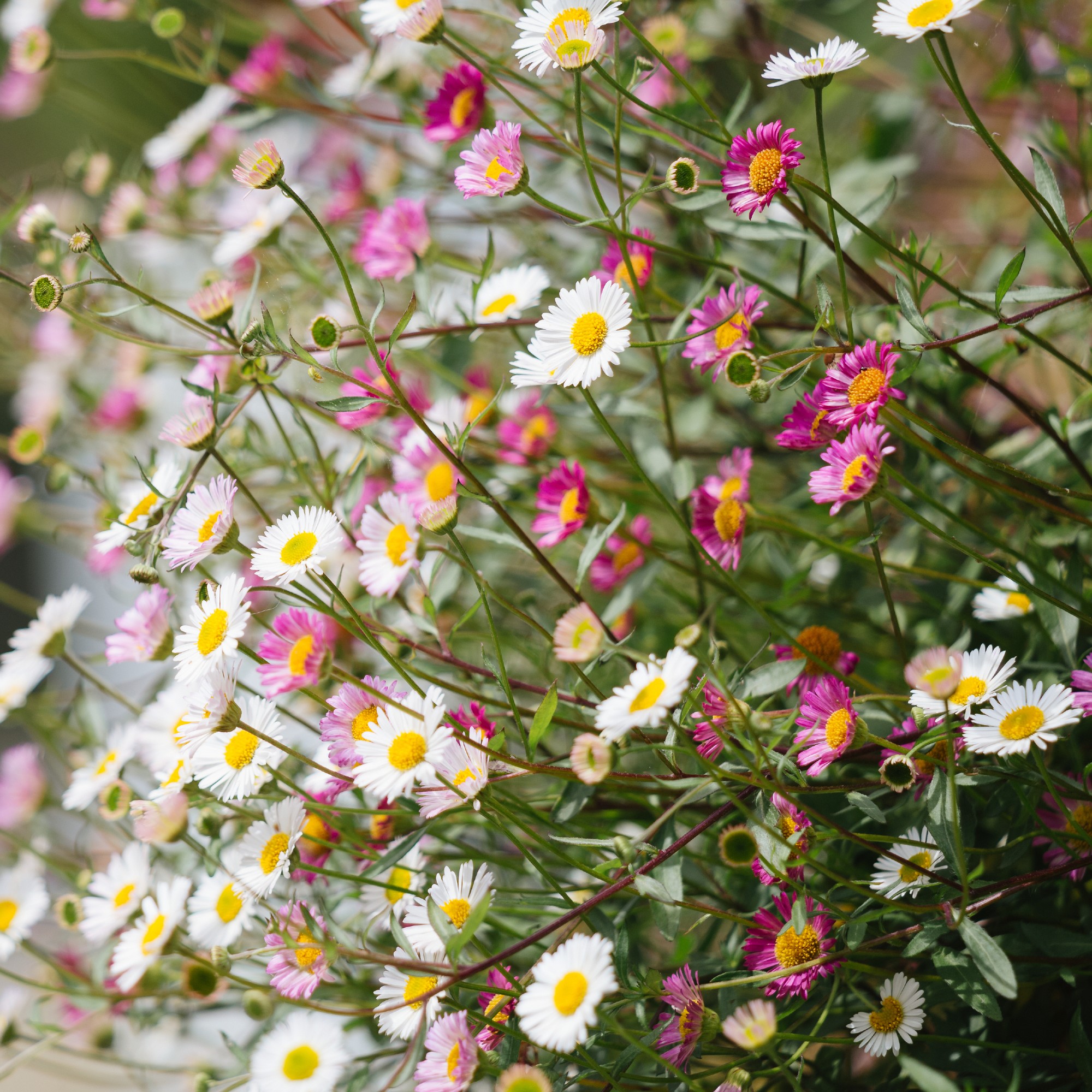
Many flower bed ideas will follow a traditional planting scheme, allowing you to get a good view of every plant. That way, you can curate a flower bed which can be appreciated in its entirety.
Sign up to our newsletter for style inspiration, real homes, project and garden advice and shopping know-how
'When you are following a traditional planting scheme, low edging plants are essential for the front of beds and borders in small gardens,' says garden designer Harriet Worsley. 'Aim for a tall structure in the back of the bed, medium plants and skinny drifts of flowers in the middle, and smaller plants at the front.'
Consider including some filler plants for sparse flower beds, too.
'For a country garden cottage look, I love Alchemilla mollis with its neon fluff of flowers and leaves that hoard raindrops like diamonds,' continues Harriet. 'It works well with that little naughty superspreader, the pink and white daisy Erigeron karvinskianus, which reseeds itself in every corner.'
You can buy Erigeron karvinskianus from Crocus, and Alchemilla mollis from Sarah Raven.

Garden designer Harriet Worsley set up Worsley Design & Consultancy after studying garden design, planting design and studying for her RHS Certificate of Horticulture. She worked as Landscape Designer for a firm in Notting Hill, and as a weekly volunteer at the Royal Botanic Gardens, Kew, where she honed her plant knowledge. She has designed everything from small London roof terraces to large country gardens, and enjoys combining minimalist landscaping using natural materials with swathes of relaxed loose planting.
3. Plant in raised beds
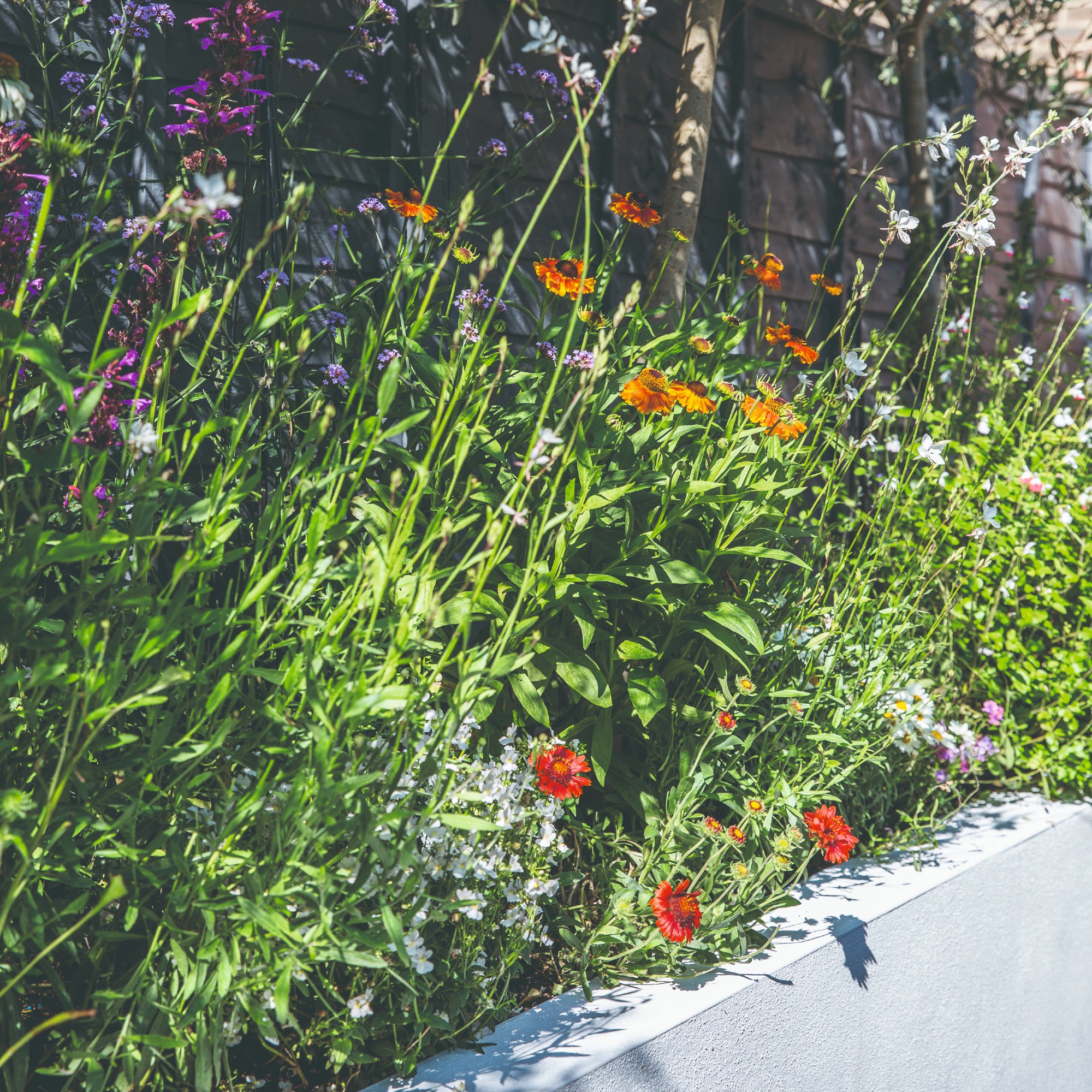
Raised planters can tie in nicely with your flower bed ideas and make a feature of your planting scheme. Many flowering varieties benefit from the extra drainage and can be better appreciated at a greater height – just make sure you know how to fill a raised bed.
'Plants such as hellebores, with their flower heads that nod down, positively benefit from being planted higher up, as you then can see the flowers,' says Harriet. 'Raised beds are excellent for city gardens as you can get closer to small plants and really appreciate their colour and form.'
You can even turn your raised flower beds into a garden seating area. 'Raised beds are also excellent because they double up as seating in a small garden,' says Harriet. 'Just make sure the retaining wall is wide enough to sit on, and at a comfortable height of around 50cm.'
4. Create a snug
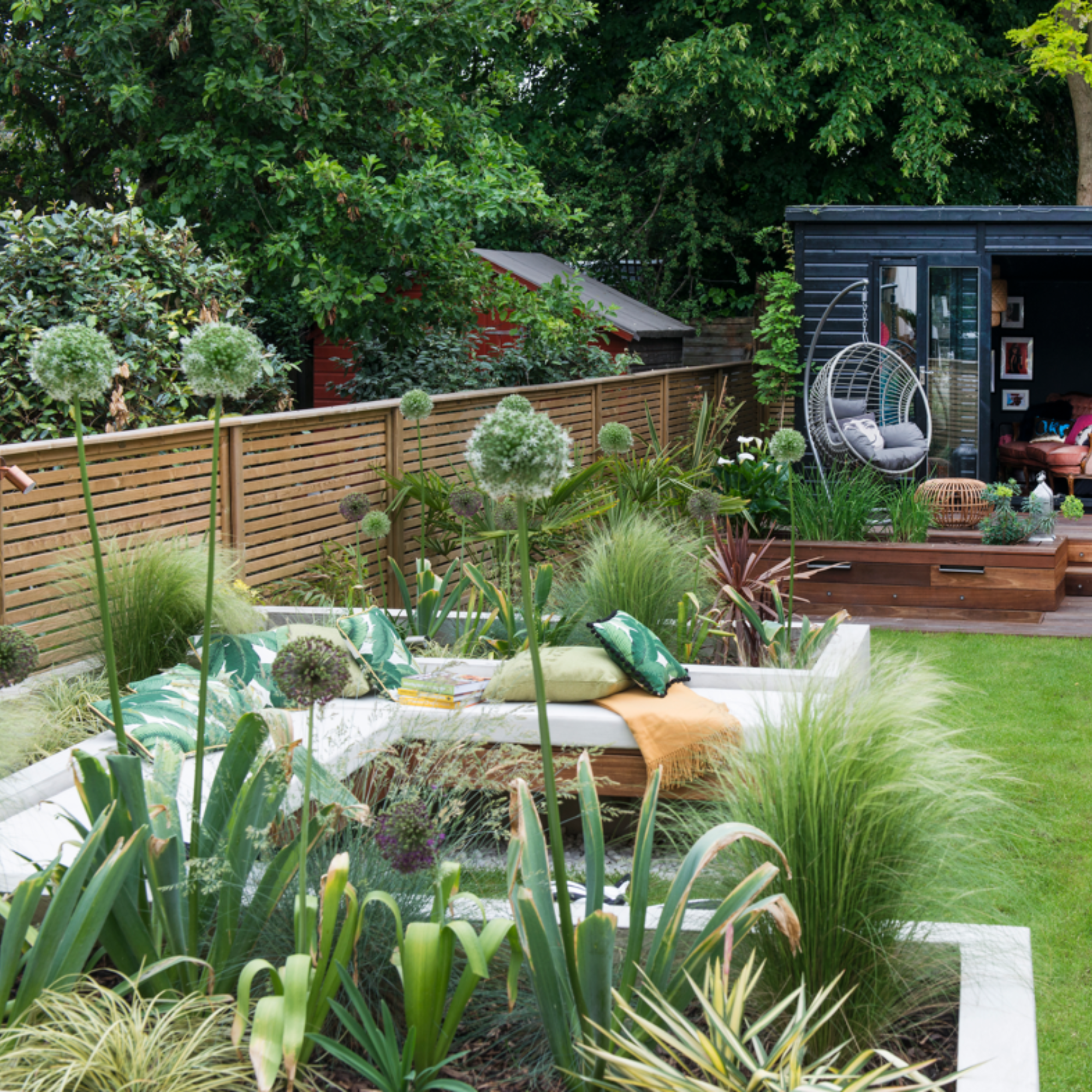
Tradition dictates that the very best flower bed ideas will run along the edges of your garden, which is why they can often become conflated with garden edging ideas.
Here's the thing, though: you can adapt your flower beds to suit your individual space – whether that's to line your garden paths or build a 'snug' around your patio, sheltering your outdoor seating area and creating a truly cosy garden all year round.
'Wherever you put your flower bed, though, pay attention to how much sunlight that particular area gets,' says Craig Wilson, co-founder, director and in-house gardening expert at Gardeners Dream. 'This will play a part in what flowers you go on to plant.'
5. Introduce a romantic colour palette
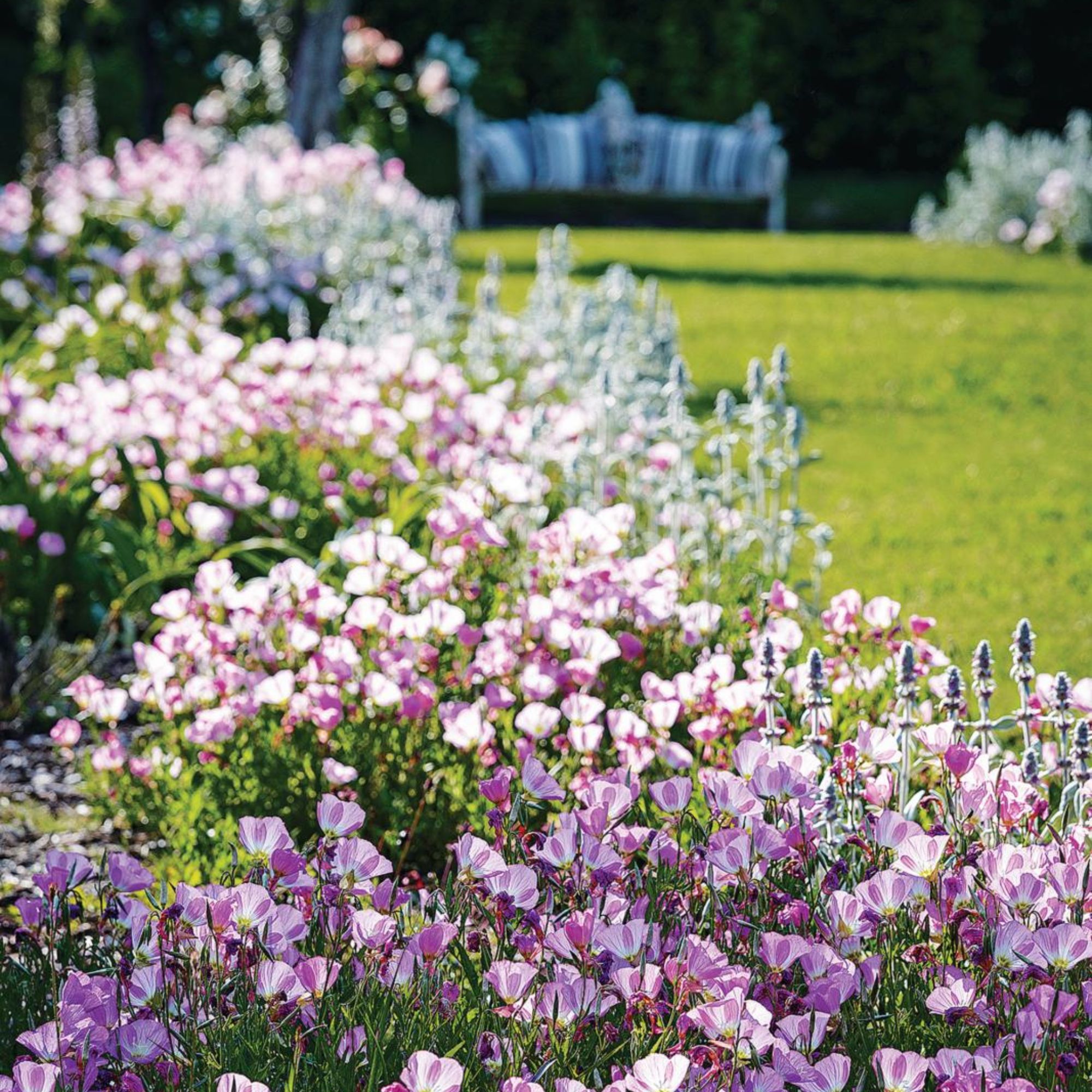
Searches for Bridgerton-inspired gardens have soared since the Netflix release, and a Bridgerton garden was even at the Chelsea Flower Show 2024.
Is it any wonder, then, that romantic colour palettes are dominating our favourite flower bed ideas on social media?
'Colours such as whites, pinks, purples and blues are very reminiscent of the Regency era,' says Calum Madock, gardening expert at HomeHow. 'These colours are often associated with love, tenderness and passion, a key theme among the series.'
6. Add plenty of texture
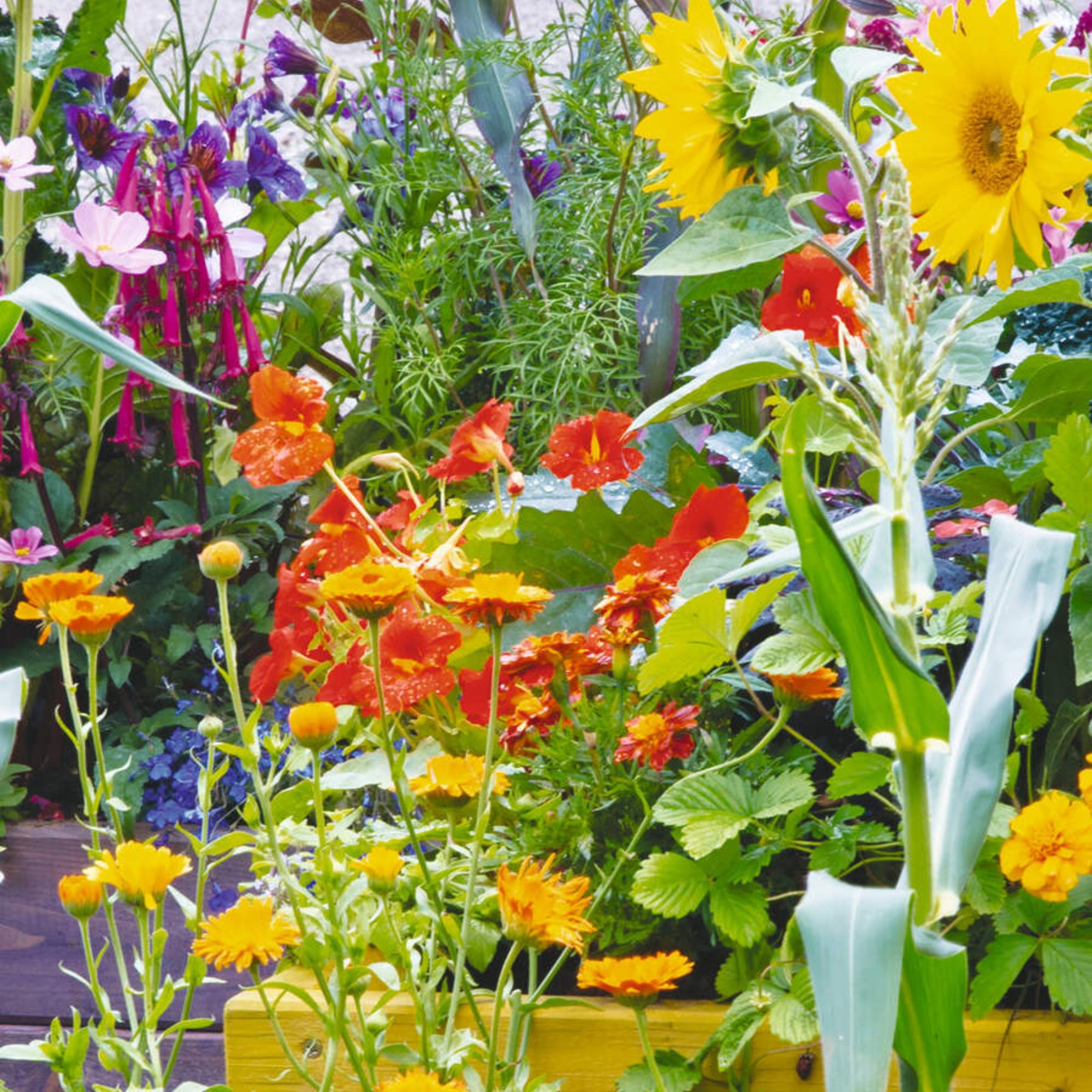
Maximalists will love the impact that comes from adding different heights and textures to their flower bed ideas.
'It's a great way to add interest, especially if you want to keep your colour theme simple,' says Craig from Gardeners Dream. 'Try planting hollyhocks or sunflowers to add some height, or plant some hydrangeas for maximum texture.'
Foxgloves and roses, too, are a great way to add some variety to your flower bed – and don't forget the allure of ornamental grasses like Stipa tenuissima, from £3.79 at Crocus.
7. Have fun with edimentals
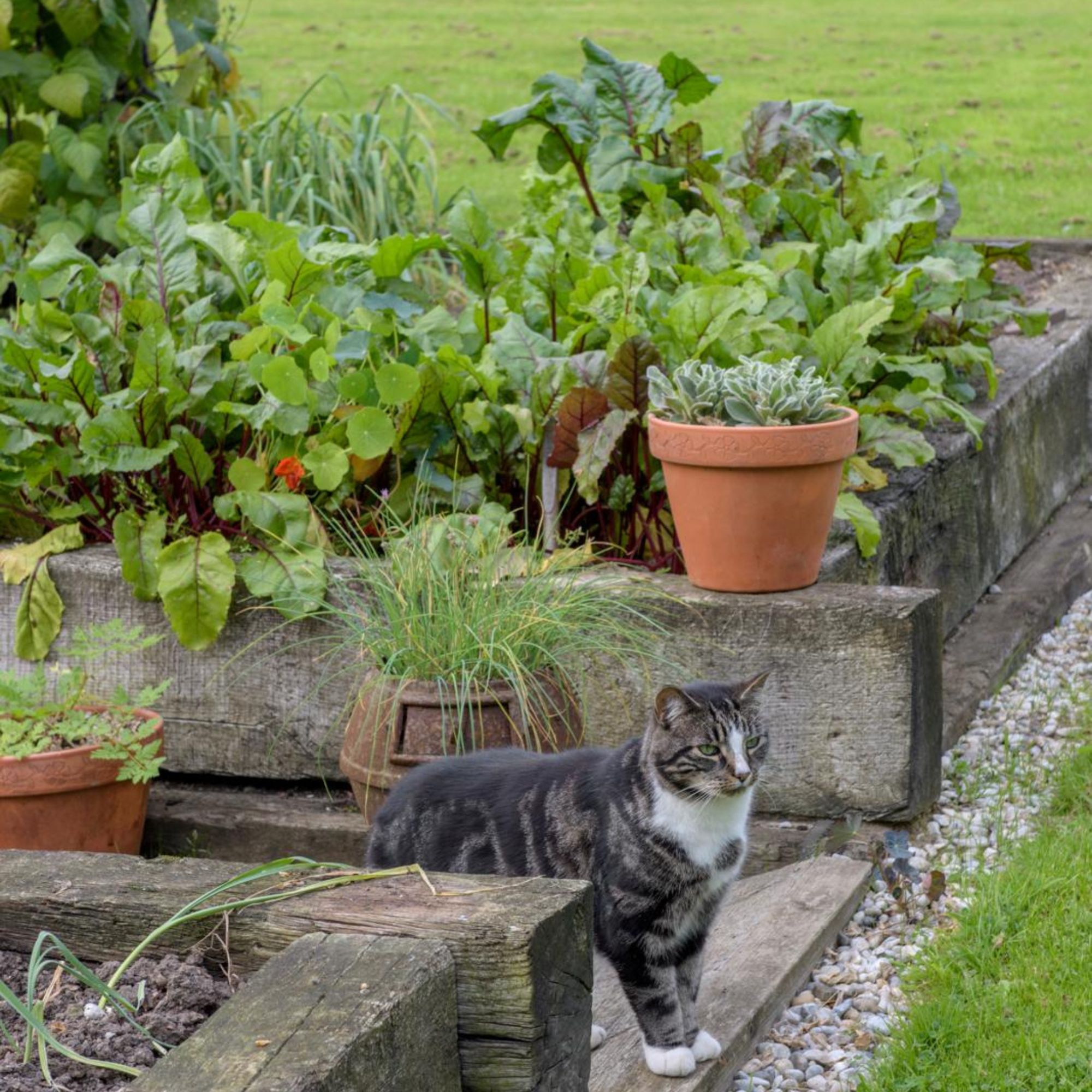
Edimentals are becoming increasingly popular, and little wonder: there are so many vegetables that are both pretty enough to plant in flower beds and incredibly tasty.
'Look up the French potager style of garden,' says Dan Ryan, parks and garden manager for The Gatton Trust, referring to the traditional jardin de curé's romantic, informal style that allows vegetables, fruit, flowers and herbs to coexist.
'They were growing beautiful vegetables in mixed beds long before the days of Instagram,' he adds.

Dan Ryan is the parks and garden manager at Gatton Park in Surrey, a historic Capability Brown Landscape. RHS-trained and with a Masters in Landscape Architecture, Dan has been working in horticulture for over a decade, from private gardens in London to large landscape management.
8. Activate all the senses
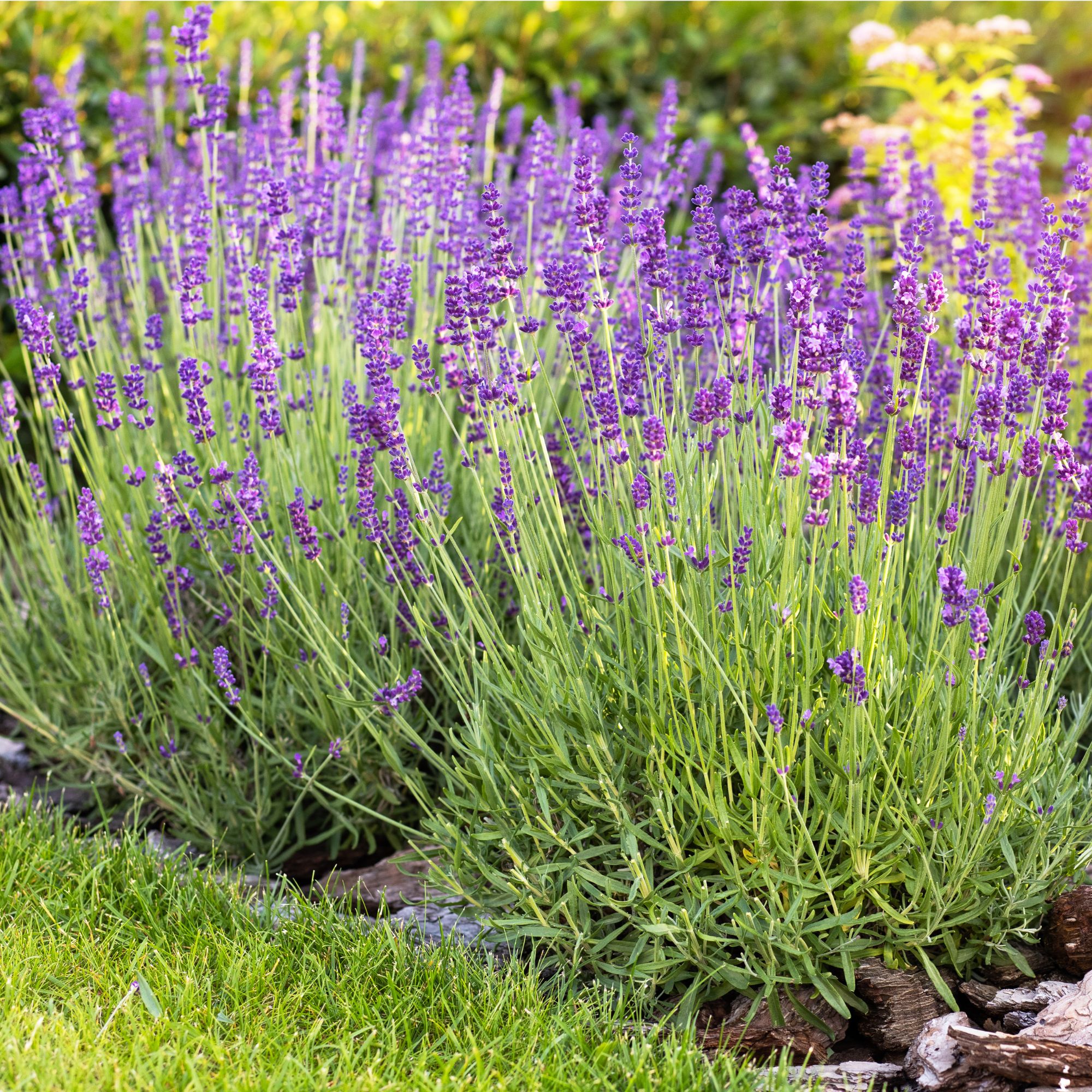
If you know how to grow lavender, you know already know how to add at least one sensory element to your flower bed ideas!
'A flower bed doesn't just have to stimulate one of our five basic senses,' says Christopher O'Donoghue, one of the co-directors at Gardens Revived. 'As well as looking beautiful, you can set yours up so it plays with touch, taste, sound, and – my personal favourite – scent, too!'
There are plenty of scented plants for a relaxing garden that can be included in your flower bed ideas, from geraniums to rosemary.
As well as lavender, Christopher suggests planting the likes of roses, jasmine, mock orange, sweet box and aromatic herbs like thyme and rosemary in your flower beds.
'All of these are wonderfully perfumed, so should make a real impact on anyone who walks by – and they're all brilliant for pollinators, too, so should tie in well with any of your favourite wildlife garden ideas.'

A gardener with over a decade of experience under his belt, Christopher set up Gardens Revived with his brother, Andrew, in 2018 to create a thriving family business. Together, they have worked on residential gardens, listed buildings and gardens, flower shows and large estates with some exceeding 70 acres – many with historical significance.
9. Add some seasonal interest

It's all too easy to get swept up in the idea that your flower bed ideas are for the warmer months only, but there are plenty of winter flowers you can use to add seasonal interest all year round.
'Choosing a mix of perennial, biennial and annual plants means you should have flowers and interest in your flower bed for as much of the year as possible,' says Morris Hankinson, director of Hopes Grove Nurseries.

Morris Hankinson is the founder and managing director of Hopes Grove Nurseries Ltd, the UK’s only specialist grower-retailer of hedging plants. He established the thriving business in 1992, shortly after graduating with a Commercial Horticulture Degree from Writtle College, Essex.
As well as a few evergreen shrubs, which will always help you add colour to your winter garden, you might consider planting hellebores and violas, too.
'Dahlias and hydrangeas should keep things looking beautiful into autumn, too,' adds Christopher.
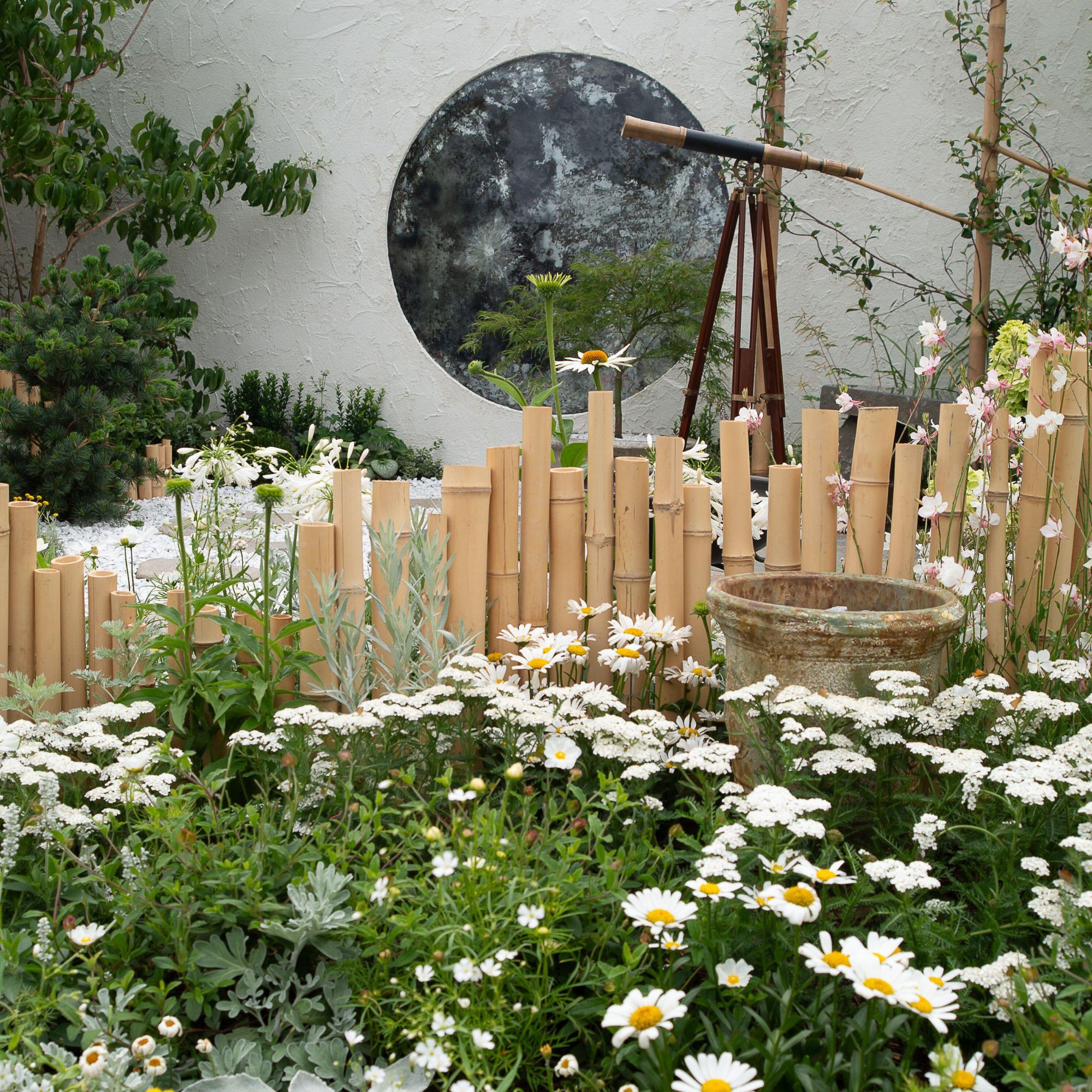
10. Don't neglect those shady spots
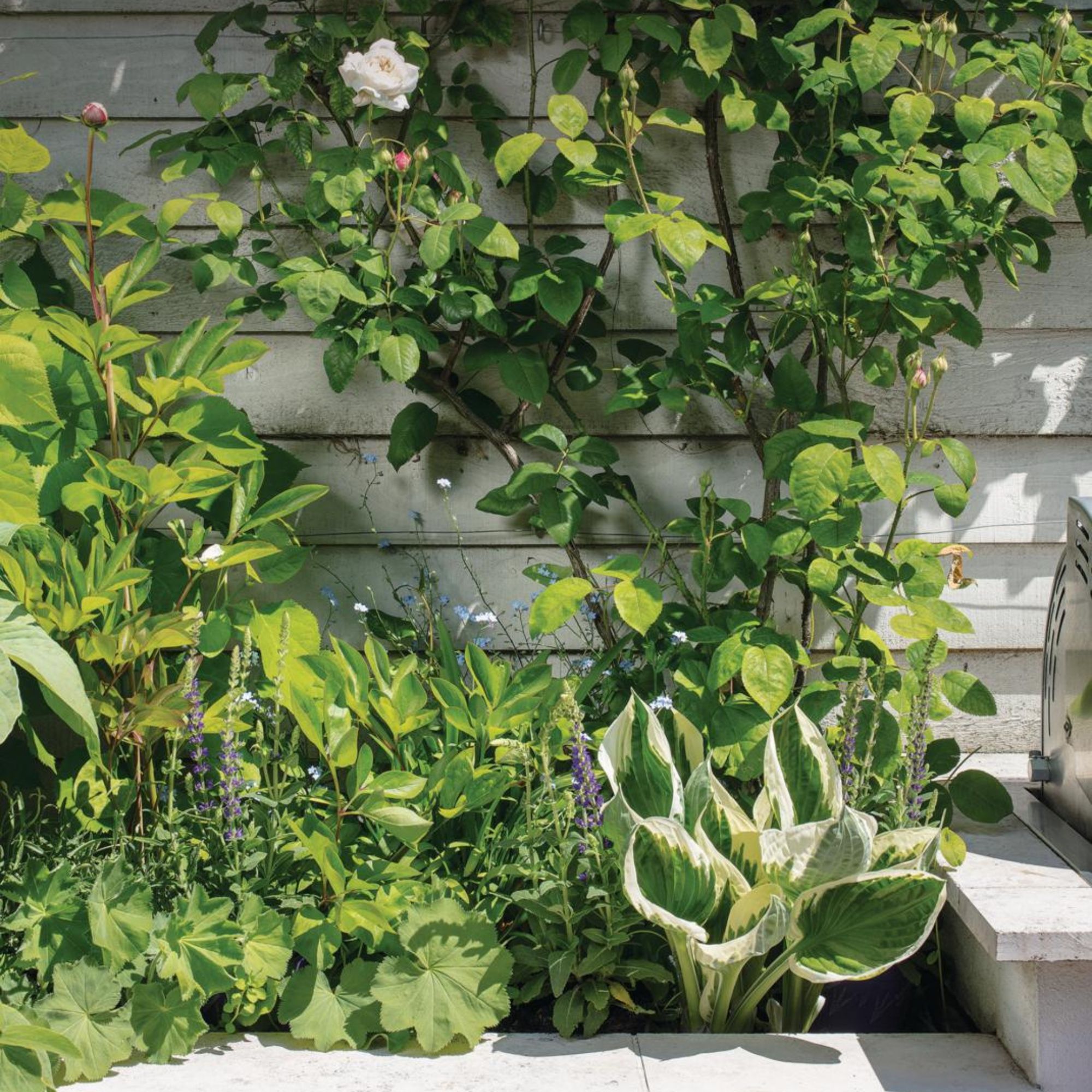
If you have a shady or north-facing garden, fret not: you can still make your flower bed ideas a reality – you just have to think outside the box a little bit.
'For a part shady border, you could plant a stand out tree such as Acer palmatum ‘Orange Dream’ or Acer palmatum ‘Sango Kaku’,' says Morris.
'Once this is done, be sure to fill the flower bed with plants that love dappled shade, such as hostas and epimediums.'
He adds, too, that you should focus on learning how to plant bulbs that will thrive in a shady environment, such as cyclamens and crocuses.
FAQs
What is the best way to lay out a flower bed?
The key to a successful flower bed is offering a diverse mix of height and structure.
'There are no real hard and fast rules when it comes to flower beds,' says Christopher from Gardens Revived. 'If you want a more formal look, keep taller plants towards the back of the flower beds – although it's good to mix things up if you're hoping for a more natural effect. And try to keep annuals nearer the front, so they're easier to remove and replace each growing season.'
It's also a good idea to think about the changing seasons and what will work well at different times of the year.
'Because of the differing flowering times, variety is your friend,' says Craig from Gardeners Dream. 'Plus, planting them alongside some evergreen shrubs will ensure your beds never look bare.'
What is the best thing to put in flower beds?
It all depends on how much sunlight your garden gets, and the type of soil you have – whether you're looking for the best plants for clay soil, sandy soil or loamy soil.
Garden designer Harriet Worsley has a few favourites. 'Liriope muscari is a useful filler for the front, and I often add seasonal annuals to give that extra boost,' she says. 'White trailing Bacopa is a winner as it's summer flowering and tolerates a bit of shade. For winter, I always go for white Cyclamen, the ones grown as annuals, and for summer, white Pelargoniums adore the sun and can handle a bit of neglect – just water them once a week.
'For big grand borders, lavender or Nepeta look absolutely stunning as edging plants – nothing beats that summer swathe of purple, and the lavender scent.'
Of course, your flower bed ideas will need some TLC – mulching, in particular, is important for keeping weeds at bay – but they will repay your efforts tenfold with their colourful blooms.

Kayleigh Dray became Ideal Home’s Acting Content Editor in the spring of 2023, and is very excited to get to work. She joins the team after a decade-long career working as a journalist and editor across a number of leading lifestyle brands, both in-house and as a freelancer.
- Sophie KingGardens Editor
You must confirm your public display name before commenting
Please logout and then login again, you will then be prompted to enter your display name.
